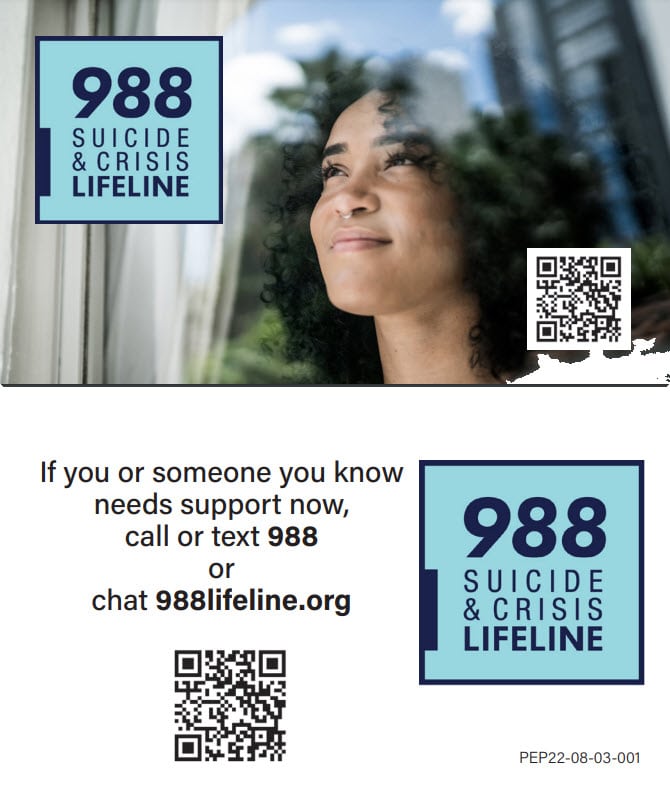September holds dual significance as both Suicide Prevention Month and Recovery Month, underscoring the profound connection between suicide and addiction. This period serves as a poignant reminder of the intertwined crises many face and the collective responsibility we have to address them.
The nexus between suicide and addiction is a complex web of emotions, biology, and societal factors. Understanding this intricate relationship can help society address both issues with more compassion and effectiveness. But how did we get here? And what can we do to mitigate this?
Understanding the Connection
For many, addiction starts as an escape—a way to numb the pain or cope with life’s challenges. Over time, as one’s reliance on substances deepens, the very escape they sought can turn into a prison. Substance dependency can further isolate individuals, depriving them of social connections and creating a sense of being trapped. This intensified isolation and the consequent feeling of hopelessness can push individuals further down the rabbit hole, potentially culminating in suicidal thoughts or actions.
Neurological Impact
Substance abuse does more than just create a fleeting high—it alters the brain’s chemistry. These chemical alterations can suppress the brain’s ability to process pleasure naturally, making it more reliant on the substance. This increased reliance not only exacerbates addiction but also magnifies feelings of depression and anxiety, both of which are significant contributors to suicidal tendencies.
Societal Influences
The societal stigma surrounding addiction often compounds the problem. Addicts are frequently perceived as weak-willed or morally flawed, leading them to internalize this shame. This internalized shame, combined with the guilt of addiction, can amplify feelings of worthlessness and hopelessness, further increasing suicide risks.
Why People with Substance Use Disorder Are at a Higher Risk
Beyond the aforementioned factors, addiction also increases susceptibility to mental health disorders. Chemical imbalances resulting from prolonged substance abuse can lead to heightened emotional responses, compromised judgment, and intensified feelings of worthlessness—all factors that increase the risk of suicidal tendencies.
Root Causes
Delving deeper into the core reasons behind addiction and the subsequent heightened risks of suicide, it’s evident that multiple factors, often interconnected, play a role.
Emotional Pain and Trauma
For countless individuals battling addiction, their journey started as an attempt to escape emotional pain or cope with traumatic events.
Coping Mechanisms
When faced with intense emotional pain, many seek refuge in substances to dull their suffering temporarily. Alcohol or drugs might offer a fleeting respite, but in the long run, this coping mechanism only adds another layer of problems, including addiction.
Childhood Trauma and its Long-Term Effects
Events during formative years can shape and influence behaviors well into adulthood. Childhood trauma, be it physical, emotional, or sexual abuse, can leave lasting scars. These scars often manifest as mental health issues, and to alleviate the associated pain, many might turn to substance abuse.
Biological Factors
In some cases, the propensity for addiction or suicidal tendencies can be traced back to one’s genes or brain chemistry.
Genetics and Heredity
Research has shown that certain genetic factors can predispose individuals to addiction. If a close family member struggles with substance abuse or mental health issues, there might be an increased risk for others in the family.
Brain Chemistry Imbalances
Some individuals naturally have imbalances in neurotransmitters, chemicals responsible for mood regulation. Such imbalances can make them more susceptible to depression, anxiety, and, consequently, substance abuse.
Environmental Triggers
Beyond the internal factors, one’s external environment can be a significant contributor to addiction and associated mental health challenges.
Peer Pressure and Social Environment
Being in an environment where substance abuse is normalized or even encouraged can heavily influence one’s behaviors. Peer pressure, especially during vulnerable teenage years, can lead many down the path of addiction.
Accessibility to Substances
Easy access to drugs or alcohol can facilitate addiction. For instance, living in areas with a high density of liquor stores or where the drug trade is rampant can increase the risk of substance abuse.
Warning Signs
Being vigilant of the warning signs associated with addiction and suicidal tendencies is crucial for prevention and timely intervention. By recognizing these indicators early on, one can potentially save a life or guide someone toward recovery.
Behavior Changes
Changes in someone’s behavior often serve as the first visible sign of deeper struggles.
Social Isolation and Withdrawal
Pulling away from friends, family, and social activities can be a telltale sign of either addiction or depression. Individuals might isolate due to feelings of shame or the belief that others won’t understand their struggles.
Increased Substance Usage
A marked increase in the frequency or quantity of substance use is a concerning indicator. If someone starts consuming more than usual or doing so at inappropriate times, it might be a sign of growing dependence.
Risk-Taking Behaviors
Engaging in reckless actions, like driving under the influence, can be a symptom of addiction’s grip. It could also signal a more profound disregard for personal safety, potentially hinting at suicidal inclinations.
Emotional and Mental Indicators
Emotions can often provide more subtle clues, but they’re equally vital in understanding someone’s mental state.
Verbal Expressions of Despair
Statements like “I can’t go on” or “Everyone would be better off without me” should never be dismissed. These expressions can indicate a person’s feelings of hopelessness and are clear warnings of potential suicidal tendencies.
Frequent Mood Swings
Rapid mood shifts, from extreme highs to profound lows, can be symptomatic of substance abuse and its emotional ramifications. It can also indicate underlying mental health disorders like bipolar disorder.
Loss of Interest in Once-Loved Activities
When someone suddenly loses interest in activities they once enjoyed, it could be a sign of depression, which often goes hand in hand with addiction. This loss of passion can manifest as neglecting hobbies, avoiding social gatherings, or shunning personal responsibilities.

Prevention and Intervention
Addressing the complex interplay between suicide and addiction requires a multifaceted approach. Effective prevention and intervention strategies can make all the difference, possibly pulling someone back from the brink or guiding them on a path to recovery.
Open Communication
Open dialogue forms the backbone of prevention. Silence can be the greatest enemy, often exacerbating feelings of isolation and despair in those struggling.
Breaking the Silence
Encouraging open conversations about feelings, struggles, and mental health can dispel myths and reduce stigma. By fostering an environment where individuals feel safe to share, you lay the foundation for prevention and early intervention.
Active Listening
Listening goes beyond just hearing words. Actively engaging with someone, showing empathy, and refraining from judgment can provide the emotional support they need. Sometimes, having someone genuinely listen can make all the difference.
Professional Help
Reaching out to professionals can provide the necessary expertise and resources for those in the throes of addiction or grappling with suicidal thoughts.
Therapeutic Interventions
Therapists and counselors trained in addiction and suicide prevention can offer coping strategies, cognitive-behavioral therapies, and other interventions tailored to an individual’s needs.
Rehabilitation Centers
For those battling severe addiction, rehabilitation centers can offer a structured environment for detoxification and recovery. These facilities provide medical oversight, counseling sessions, and peer support.
Crisis Hotlines
In moments of acute crisis, helplines can be lifesavers. These 24/7 services, manned by trained professionals, offer immediate support and guidance. Encouraging someone to save these numbers or having them on hand can make a crucial difference during a dire moment.
The 988 Lifeline provides 24/7, free, and confidential support for people in distress, prevention and crisis resources for you or your loved ones.

Overcoming Stigmas
Stigmatization can be one of the most significant barriers for individuals grappling with addiction and suicidal thoughts. The negative stereotypes and misconceptions surrounding these issues can deter people from seeking help. However, concerted efforts on multiple fronts can lead to change.
Changing Societal Views
Transforming societal views requires a broad-based approach, targeting cultural norms, media portrayals, and public understanding.
Education and Awareness Campaigns
Launching campaigns that educate the public about addiction and mental health can be instrumental. These Suicide Prevention campaigns can debunk myths, provide accurate information, and highlight the human side of these issues. They can also stress the fact that addiction isn’t a moral failing but a complex condition influenced by a myriad of factors.
Media Responsibility
The media plays a pivotal role in shaping public opinion. Ethical reporting that avoids sensationalism employs sensitive language, and prioritizes educational content can reduce stigma. Journalists and content creators should be trained in responsible coverage of addiction and suicide-related stories.
The Role of Support Systems
Support networks play an integral role in combating stigma. Their influence can foster understanding and compassion, making it easier for individuals to reach out when in need.
Family and Friends
The immediate circle of a person can act as a bulwark against societal prejudice. Families and friends should be educated on the nuances of addiction and mental health. They can then provide emotional support, encourage professional help, and be vocal advocates against stigmatization.
Support Groups and Therapy
Engaging with peers facing similar challenges can be therapeutic for affected individuals. These support groups provide a safe space where experiences can be shared, strategies discussed, and collective strength harnessed. Group therapy sessions, led by trained professionals, can also help individuals process their experiences and offer coping mechanisms.
Help is Available
The intricate relationship between suicide and addiction underscores the dire need for holistic, comprehensive interventions. As we’ve explored throughout this article, understanding the root causes, recognizing warning signs, and employing effective prevention and intervention strategies are paramount. But knowing where to turn for support is equally crucial.
For residents of San Diego, Healthy Life Recovery stands as a beacon of hope. As an addiction treatment center with a compassionate approach, we recognize the multifaceted nature of addiction and its potential overlap with suicidal ideation. Our team of professionals offers individualized treatment plans that consider the unique circumstances and needs of each patient.
By providing a supportive environment, cutting-edge therapies, and community engagement initiatives, Healthy Life Recovery aids individuals in reclaiming their lives from the clutches of addiction. For anyone seeking a path to recovery or assisting a loved one in their journey, considering such specialized institutions can be a game-changer. In the battle against addiction and the ripple effects it can have on one’s mental well-being, centers like Healthy Life Recovery are vital pillars in the community.






